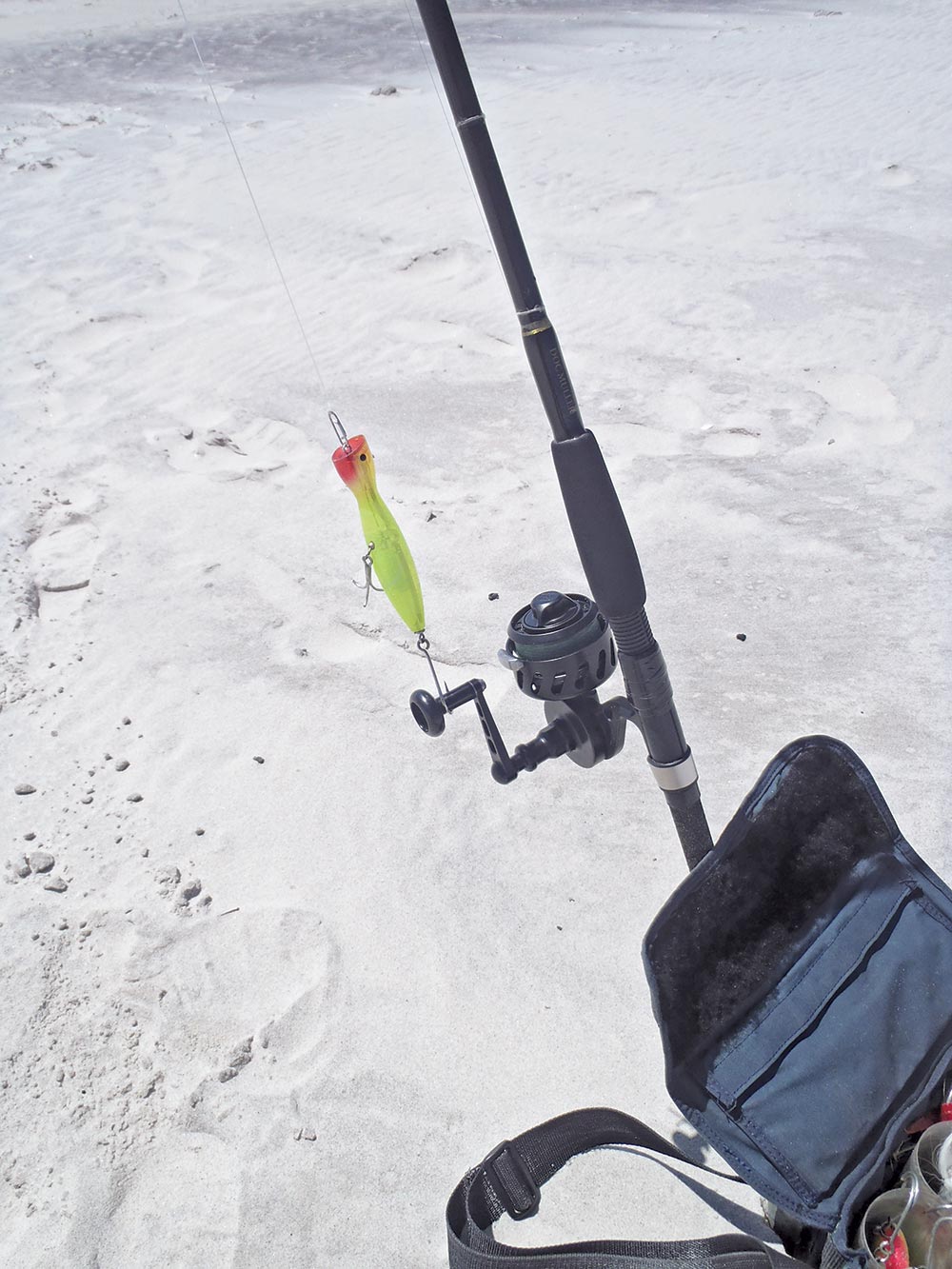Some simple in-season maintenance can help you avoid lost lures, fish and time.
The old saw about the devil being in the details is true about most things, including surf fishing. Everyone has their unique way of doing things, but ignoring tackle details is neither unique nor a good idea. Time and again, a look into an angler’s surf bag reveals rusted and bent hooks, and discolored bucktails. Immediately I think, if this angler’s lures are this bad, I wonder about the knots, the condition of the reel and the line on it, and are there any micro fractures in the guides?
I discovered a long time ago that procrastination about tackle maintenance leads to lost lures, lost fish, lost time, and frustration. This, in spite of the fact maintenance only takes seconds if done each trip. However, once the tackle’s condition is so poor that it demands attention, the work can consume hours. I constantly advise my mentees and friends to spend a few seconds on simple maintenance that saves time, prevents tackle failure, and avoids disappointment.

I understand that few of us are mechanics and many of us are reluctant to strip tackle down. However, there are some easy things an angler can do to avoid breakdowns. Let’s start with the rod. Every few trips I check my rod for cracks, twisted guide feet, and micro fractures in the guides. I run a Q-Tip around the inside of the guide ring, and in and out, too. If cotton fibers become lifted, then it is likely there is a crack. Also, I’m careful not to bang my rod into things when storing, carrying, or using the rod.
Next comes the reel. I use Van Staal reels and I have never wanted to open it – that’s what technicians are for. However, if I’m using the reel every day or almost every day and under tough conditions such as pounding waves, I clean and lube the roller. It’s easy. Use a blunt nosed plier to remove the side nut. The roller can be pulled out from its cup mount. Now, use either a fine tweezer or a small hook, get under the two O-rings, and lift them carefully. Place parts on a paper towel so they won’t be lost. Now, add thin oil to the roller to lift dirt, salt, and grime. Next tap the oil out, and wipe the roller. I replace the oil with quality waterproof grease. I turn the roller a dozen times to distribute the grease while keeping a firm grip on the flat-sided roller spindle. Replace the O-rings in the same order they came out. Clean off the cup mount, slide the roller back in place (flat side to flat side), and replace the nut. This maintenance is crucial because if grime and salt build up and the roller doesn’t turn, braided line will cut into the metal roller leading to line cuts, lost fish, and lost lures. It also makes fish harder to fight. Next, place a drop or two of oil on those parts of the handle that spin. Finally, remove the drag nut, and clean the surfaces under the nut until all dirt and grit is removed, and replace the nut. If your reel doesn’t have a sealed drag and you’re brave, remove the “C” clip and washers, being very careful to keep the washers in order by turning them upside down on a paper towel. Clean the washers with a soft rag, lubricate if the manufacturer suggests it, and then replace the washers in reverse to rebuild the drag.
Many surf rats are diligent about replacing hooks in winter, but neglect doing so in-season. In addition, hooks are not sharpened regularly, either. Dull hooks do not penetrate cartilage and tough tissue very well, so sharpen those hooks! Now, let’s get real. Hooks are cheap, especially if you buy them in bulk. I have boxes of 25 and 50 in my basement so that I never run short. At the first sign of rust or bending, I replace them. I prefer swing hook bucktails because I can change the hooks regularly. As a result, my bucktails are never discolored by rust, the hooks are strong, and the points sharp.
Line is also taken for granted. Although modern braided lines last a long time compared to stretchy mono, they can still be frayed by bottom debris, fish gill covers, suspended sand, hooks, etc. Check your line regularly and cut back from the front frayed section. Finally, practice your knot tying and tie good ones. The improved clinch knot is easy to tie, is a 95% strong knot when tied properly, and lasts for several trips when tied with braid.




